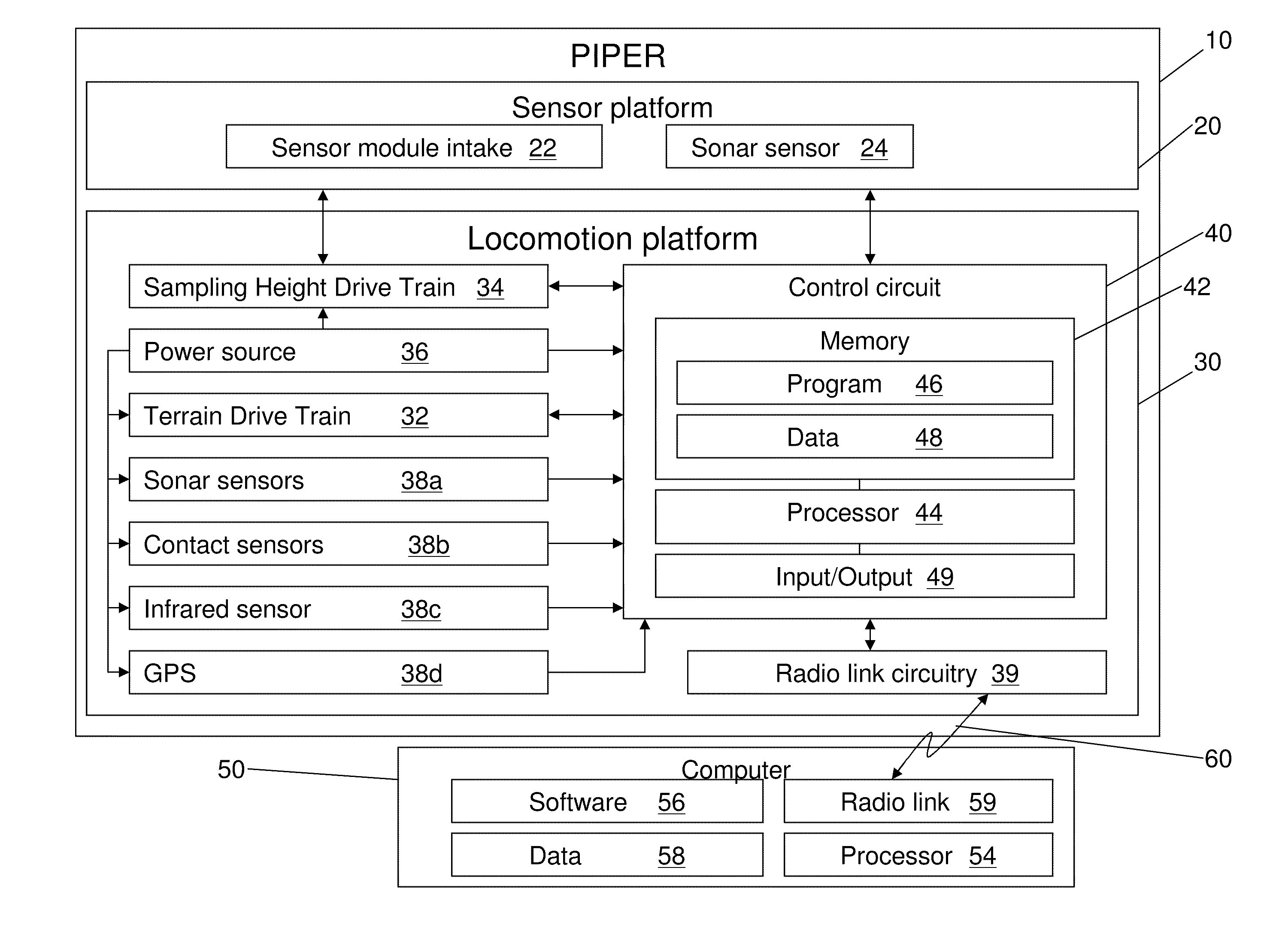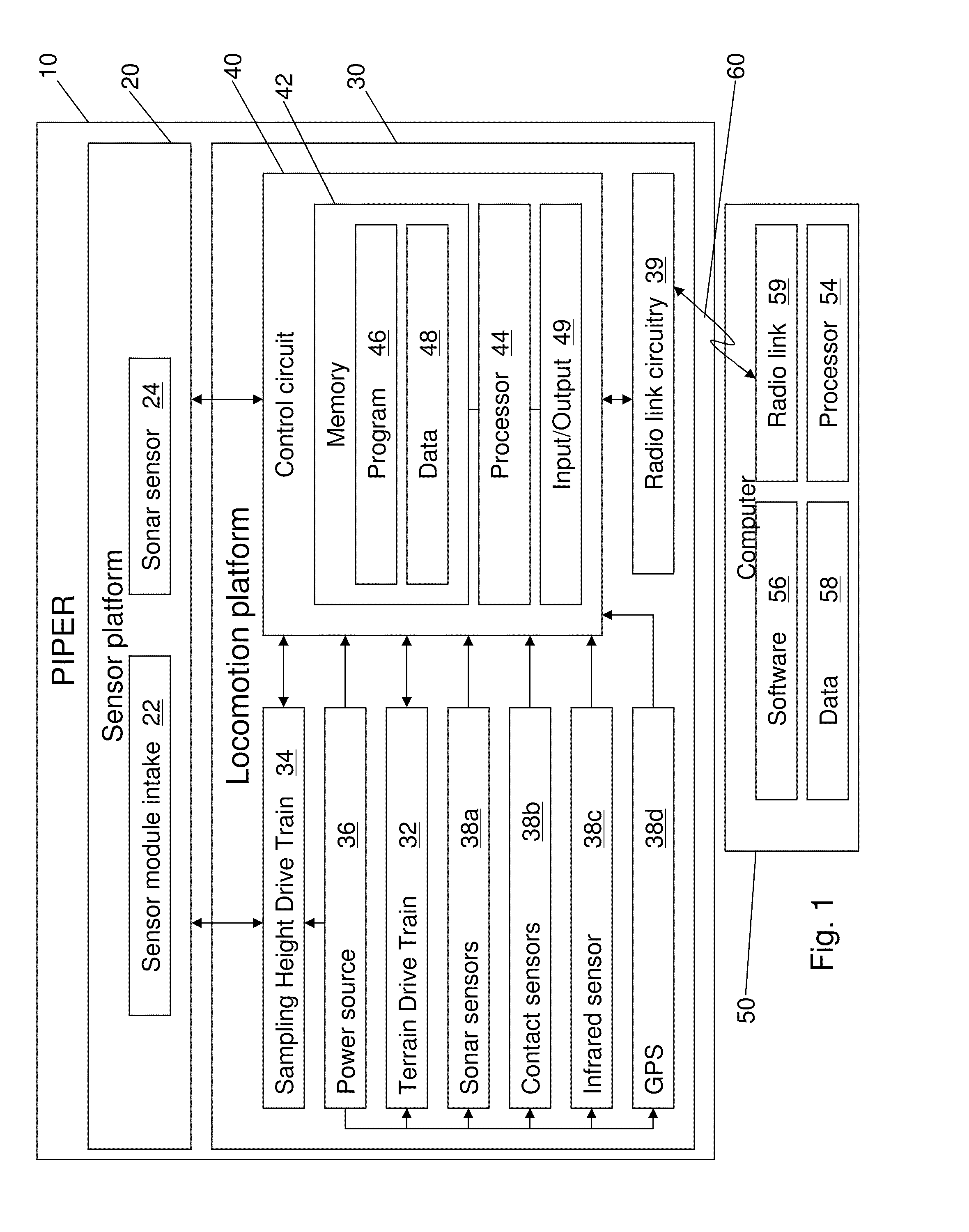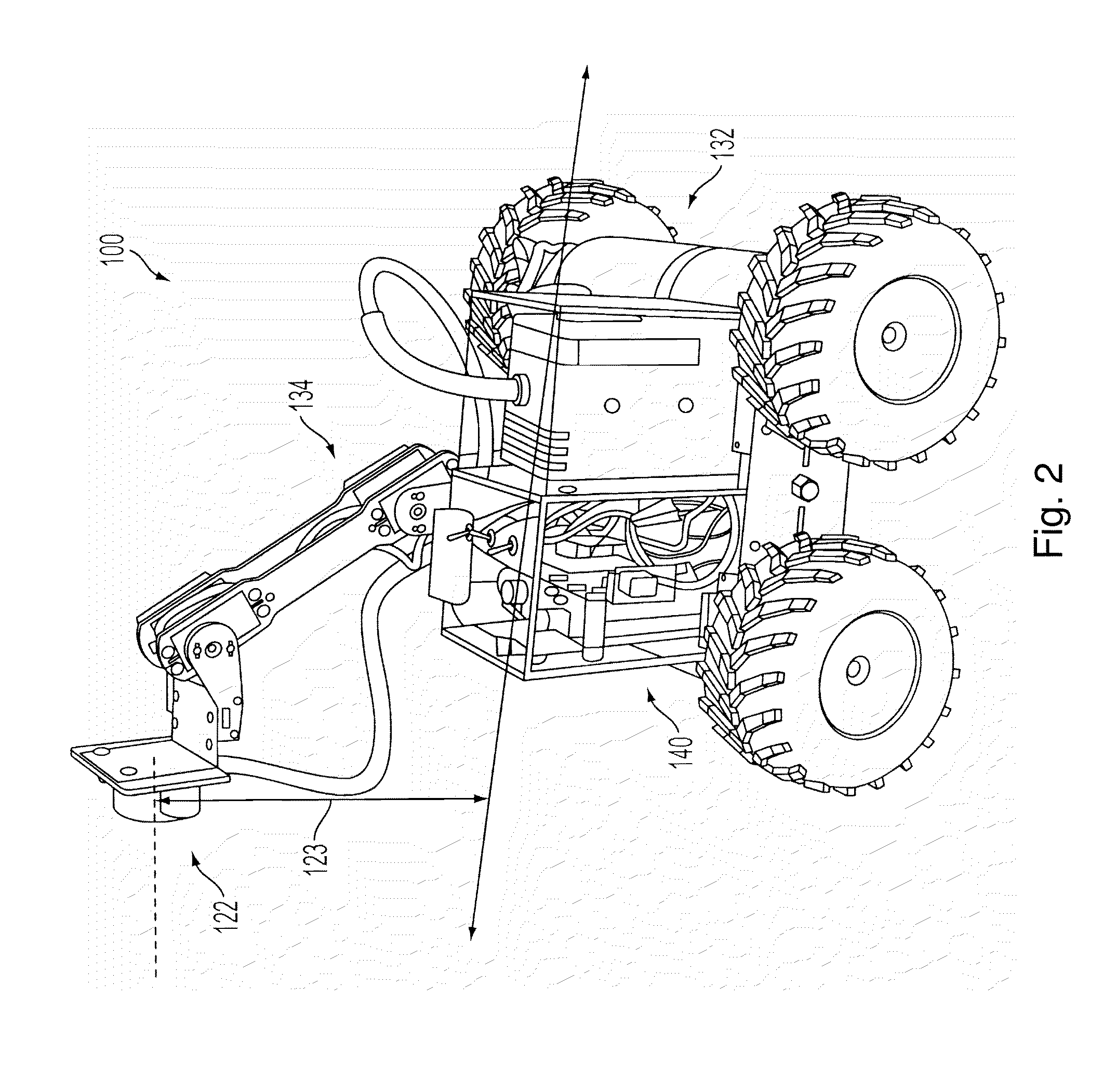Inhalable particulate environmental robotic sampler
a robotic and inhalable technology, applied in the field of air samplers, can solve the problems of inability to direct measure the exposure of children in the first year of life, difficult to achieve more accurate exposure characterization, and inability to place sampling pumps on them,
- Summary
- Abstract
- Description
- Claims
- Application Information
AI Technical Summary
Benefits of technology
Problems solved by technology
Method used
Image
Examples
Embodiment Construction
[0022]Since children six to twelve months of age spend much of their time playing on the floor, they can be exposed to inhalable particulate matter (PM)2.5 μm in diameter) are preferentially re-suspended by floor activities.
[0023]A more accurate characterization of the exposure of children in the first year of life is essential in order to improve our understanding of the possible role of allergens and pollutants in the development and the initiation of airway responses to asthmatic triggers. One solution to the exposure assessment of very young children without a personal monitor is the development of a new methodology that can effectively estimate exposures of children by the mounting of air monitors on a robotic sampler that can mimic the activity patterns completed while a child explores his / her world.
[0024]Various embodiments relate to a Pre-Toddler Inhalable Particulate Environmental Robotic (PIPER) sampler, an autonomous robotic platform for the sampling of inhalable particle...
PUM
 Login to View More
Login to View More Abstract
Description
Claims
Application Information
 Login to View More
Login to View More - R&D
- Intellectual Property
- Life Sciences
- Materials
- Tech Scout
- Unparalleled Data Quality
- Higher Quality Content
- 60% Fewer Hallucinations
Browse by: Latest US Patents, China's latest patents, Technical Efficacy Thesaurus, Application Domain, Technology Topic, Popular Technical Reports.
© 2025 PatSnap. All rights reserved.Legal|Privacy policy|Modern Slavery Act Transparency Statement|Sitemap|About US| Contact US: help@patsnap.com



